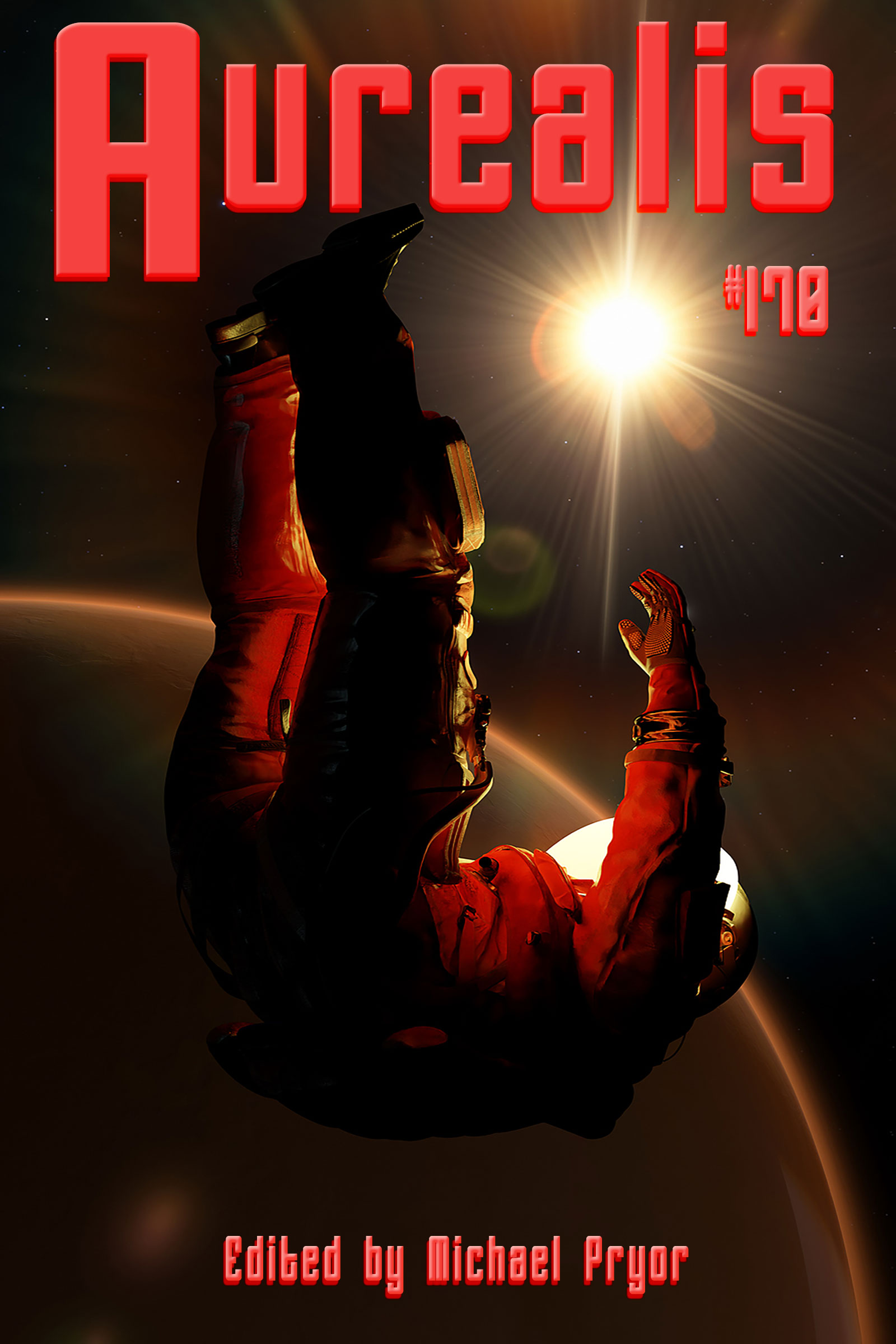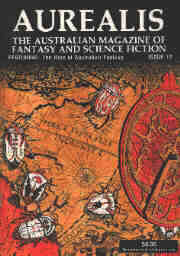Aurealis #170
$3.99
Aurealis #170 is proud to present the compelling ‘Dog of War’ by Colin Clark, the cinematic ‘Lacebound’ by Eliza Baker and the punchy ‘Trashbot’ by Cameron Fischer. Our stunning illustrations for these stories come from Joel Bisaillon, Leah Clementson, and Simon Walpole. Our top non-fiction roll-out is: ‘The Dishonest Melodrama of All Of Us Strangers’ by Ani White, ‘What Makes a Good (Movie) Sequel?’ by Lachlan Walter and ‘Wolves on the Page: Hunting the Great Werewolf Novel’ by Emmet O’Cuana. And, of course, we have our absorbing Reviews section, worth the price of admittance on its own.
Aurealis, the future is ahead.
- From the Cloud — Michael Pryor
- Dog of War — Colin Clark
- Lacebound — Eliza Baker
- Trashbot — Cameron Fischer
- The Dishonest Melodrama of All Of Us Strangers — Ani White
- What Makes a Good (Movie) Sequel? — Lachlan Walter
- Wolves on the Page: Hunting the Great Werewolf Novel — Emmet O'Cuana
In a recent blog post, the National Library of Australia (NLA) points out that its Legal Deposit scheme would, essentially, help preserve civilisation when we collapse into dystopia.
Legal deposit has been a law in Australia for over 100 years. It ensures that the nation’s published heritage is collected and preserved for future generations.
The Legal Deposit scheme is a law that says: ‘One copy of everything that is published in Australia is to be given to the National Library under the legal deposit provisions of the Copyright Act (1968).’ As a result, the NLA has lots and lots of material. Enough to keep the lights burning if the world descends into barbarism? Let’s hope we don’t ever need to find out.
Regardless, the blog post is a fascinating look at how Australian authors deal with dystopias from M. Barnard Eldershaw’s 1947 Tomorrow and Tomorrow and Tomorrow to the present day. The absorbing and worthwhile article concludes with: ‘The sense of looming destruction which haunts apocalyptic narratives arises from the fears of society in the period that they were written. Explored alongside non-fiction works and other primary sources these novels help inform us about lived experience in history, examining political and social dynamics to offer us an alternative way to understand the world we are living in.’
And thus with Aurealis’s stories. We have featured many dystopic stories in the past and will continue to do so, as this theme is an integral part of science fiction and is likely to be so as long as we can contemplate the future. Good examples are Amy Dawn Buchan’s ‘A Dead World Wakens’ (Aurealis #159), Leon D Furze’s ‘Mirrorsong’ (Aurealis #148), Tom Walters’ ‘Advena’ (Aurealis #149), and we mustn’t forget non-fiction articles such as Kris Ashton’s ‘Individualism in 20th Century Dystopian Fiction’ (Aurealis #153).
The best way to prepare for the future is to imagine it. Here at Aurealis, we’re helping you do just that.
From Dog of War by Colin Clark:
Commander Olsen dished it up straight: shoot the children first. The little bastards were agile, fleet-footed and mercury-quick through the debris. And, more-often-than-not, wired with explosives. One recently took out a whole truck of soldiers when pretending to beg for food. I’d been extra-diligent about my duties since that particular clusterfuck.
From Lacebound by Eliza Baker:
Celia looked back at the city and the emerald haze of the fading towers.
The carriage swayed along the pebbled road. It was one of the smoother ones she had encountered, but with each tiny jolt in the carriage someone inside it sniffled and gasped like they were on board a ship in a storm.
From Trashbot by Cameron Fischer:
He had one foot in the bay hall and the other hovering over the floor in the galley as though sneaking in. If it were anywhere else, Edward would have said, ‘Screw it. Leave him in his robot yoga pose,’ but Oscar was blocking the galley. Better yet, the robot’s venturing foot was low enough that when Edward tried to wiggle him out, it caught on the hatch’s threshold. Edward would have to tilt the robot and hope Oscar’s half-ton frame didn’t topple onto him.
From The Dishonest Melodrama of All Of Us Strangers by Ani White:
Weeping can be a release. Melodrama as a genre usually offers this release: catharsis, closure, exorcism. This article analyses three supernatural family melodramas—chronologically The Sixth Sense (1999), Hereditary (2018) and All of Us Strangers (2023)—with Hereditary contrasting sharply with the other two.
From What Makes a Good (Movie) Sequel? by Lachlan Walter:
The diplomatic thing to say is that much like beauty, the quality of a sequel—its essential ‘goodness’—is in the eye of the beholder (unless, of course, it’s an obvious debacle à la 1977’s Exorcist II: The Heretic, 1987’s Jaws: The Revenge or 1997’s Batman & Robin, all of which have entered ‘so bad it’s good’ territory). Therefore, if we follow this ‘in the eye of the beholder’ philosophy to its logical endpoint, we’re left with no choice but to say that a sequel that dramatically expands the narrative, character arcs, themes and subtext of its opening instalment is equally as ‘good’ as one that simply does more of the same with a side serving of ‘but bigger’ or a big dollop of fan-service.
What a load of hooey.
From Wolves on the Page: Hunting the Great Werewolf Novel by Emmet O'Cuana:
It is perhaps ironic, given their sensitivity to the precious metal in question, that the werewolf has made a home on the silver screen. Of the host of gothic monsters that have travelled to Hollywood from various cultures and countries, as creatures of myth or folktale persisting down through the centuries, it is the lycanthrope who has thrived, while their prowlings on the printed page have received less attention.





